Digital processes dominate most businesses and that’s certainly true in veterinary practices. For example, software that manages patient records, tracks inventory, triggers invoices and more, can elevate patient care and save time. But, improving the patient experience and increasing productivity isn’t exclusive to digital solutions. Some manual processes are still essential to your operation. And to illustrate, here are 5 labels every veterinary practice needs to deliver effective patient care.
Veterinary Labels Used Throughout A Practice
From the time a patient checks in with your practice, goes through an examination and other clinical care procedures, to the time they depart, veterinary labels play an important role. In fact, labels are an important aspect of effective patient care.
For example…
Examination Room Labels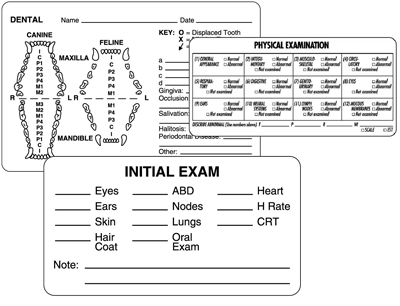
Examination room labels assist record-keeping during the examination process. They help you detail the physical findings, capture consent signatures and record dental and vaccination information. Plus, they serve as a checklist to ensure you cover every item on the exam routine.
Examination room labels are an effective and easy way to document patient exams and keep pet records complete and legible.
Lab Labels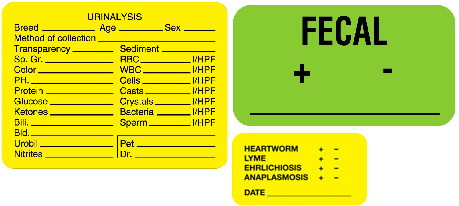
And, if you are treating a sick patient or when a regular checkup uncovers a potential problem, an accurate diagnosis often requires tests. To illustrate, lab labels allow you to document stool, urine and blood samples. Plus, they are easily applied to the patient record for future reference. In addition, lab labels make it easy to chronicle viruses including canine parvovirus, feline leukemia virus, feline immunodeficiency and more.
Prescription Medication Labels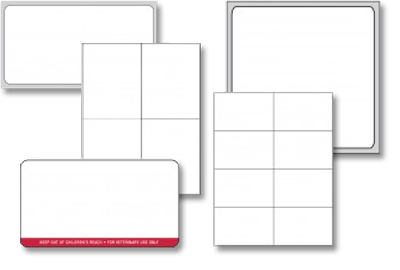
Once you’ve made the diagnosis, prescribing a medication may be the next step. And when it is, prescription labels help the veterinary staff dispense medications safely and accurately. For instance, they make drug names and concentrations stand out which helps to prevent accidental misdosing. Most veterinary office printers, including DYMO, Zebra and other thermal and laser printers, provide templates that make it easy to generate well designed pharmacy labels from blank label stock.
Read More About The Steps You Can Use To Reduce Vet Medication Errors
And in addition to reducing medication errors in your practice, medication labels assist pet owners, communicating proper storage and care giving, once the pet is at home.
IV Labels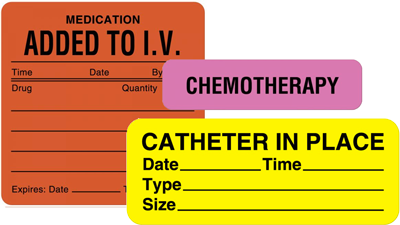
Further, when the diagnosis includes surgery, the procedure, and the pre op and post op communications are most effective when integrating labels into the process. For example, labeling the IV tubing calls attention to the fluid contained in the IV bag thereby minimizing medication errors. Labeling IV tubing is especially useful when a patient requires multiple IV lines.
Care Instruction Labels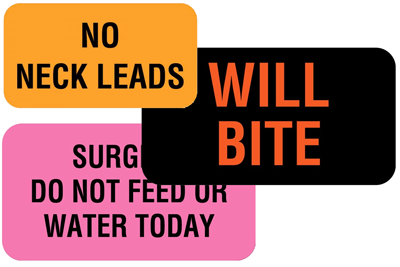
Plus, during surgery prep, labels communicate food and water restrictions, medication instructions and more. What’s more, when surgery isn’t required, extended care may be. Whether that’s a few hours or a few days, care instruction labels help communicate concise information to everyone.
Follow-up Appointments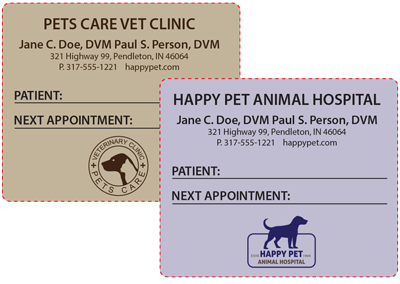
Once care is complete and the animal is headed home, a follow-up appointment or six month check-up is next on the agenda. Using a personalized appointment card, or a sticker with your clinic name and logo that you can attach to client forms, will remind your patient of their next appointment and enhance your brand.
In addition, date labels and filing supplies help keep manual files in order which makes the interaction more efficient for the staff and the client.
United Ad Label
The information above illustrates the 5 labels every veterinary practice needs to deliver effective patient care. But, they are just a few of the labels used throughout your facility. From the examination room to follow-up appointments and throughout the patient care process, UAL stocks hundreds of products that help improve veterinary practice communications. Contact us to learn more.
